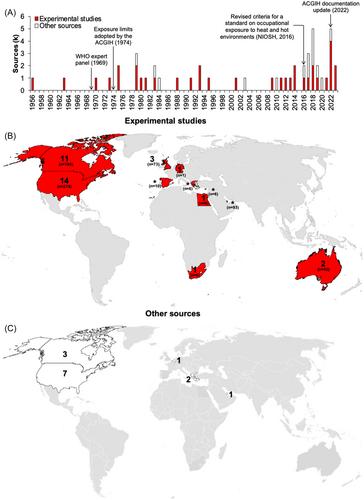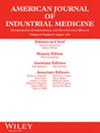Work–rest regimens for work in hot environments: A scoping review
Abstract
Background
To limit exposures to occupational heat stress, leading occupational health and safety organizations recommend work–rest regimens to prevent core temperature from exceeding 38°C or increasing by ≥1°C. This scoping review aims to map existing knowledge of the effects of work–rest regimens in hot environments and to propose recommendations for future research based on identified gaps.
Methods
We performed a search of 10 databases to retrieve studies focused on work–rest regimens under hot conditions.
Results
Forty-nine articles were included, of which 35 were experimental studies. Most studies were conducted in laboratory settings, in North America (71%), on healthy young adults, with 94% of the 642 participants being males. Most studies (66%) employed a protocol duration ≤240 min (222 ± 162 min, range: 37–660) and the time-weighted average wet-bulb globe temperature was 27 ± 4°C (range: 18–34). The work–rest regimens implemented were those proposed by the American Conference of Governmental and Industrial Hygiene (20%), National Institute of Occupational Safety and Health (11%), or the Australian Army (3%). The remaining studies (66%) did not mention how the work–rest regimens were derived. Most studies (89%) focused on physical tasks only. Most studies (94%) reported core temperature, whereas only 22% reported physical and/or mental performance outcomes, respectively. Of the 35 experimental studies included, 77% indicated that core temperature exceeded 38°C.
Conclusions
Although work–rest regimens are widely used, few studies have investigated their physiological effectiveness. These studies were mainly short in duration, involved mostly healthy young males, and rarely considered the effect of work–rest regimens beyond heat strain during physical exertion.


 求助内容:
求助内容: 应助结果提醒方式:
应助结果提醒方式:


